Spanish Holy Week in Ronda
Howdy!
As many of my followers know, I lived and worked in southern Spain for several years. While there, I was able to enjoy Spanish Holy Week.
Firstly, the celebrations in Spain, despite a similar appearance, have nothing to do with the KKK in the USA. These use of these pointy hats, called capirotes dates back to the sixteenth century. Hats and masks of various types are used in different processions and regions to hide the identity of the wearer. This is because those that wear them, at least traditionally, did so as a form of penance or atonement and did not want their identity known. For the same reason, those wearing them are called penitentes, although they are also known as nazarenos.
Also, before we start, Spain has a very strong history of Catholocism. This is for a number of reasons, including a nearly 800-year war to push out Muslim invaders who swept through the Iberian Peninsula in 711, conquering almost everything south of the Pyrenees mountains. While religious faith and participation is in decline and only a small percentage of people attend mass regularly, Catholicism is still a strong part of the cultural identity of the country.
Spanish Holy Week processions begin early in the day on Palm Sunday and is impossible to ignore. The sound of drums reverberate through the city followed shortly thereafter by the sound of trumpets. If that isn't enough, the scent of incense permeates the air everywhere you go.
In many cities, local businesses will have a free publication detailing the various local processions, routes, and what religious order is behind them. The year I lived in Ronda, I picked one of these pamphlets up a week in advance to try and plan where I could get some interesting photos.
These two girls were chatting and waiting for the procession to start, with the backdrop of the low mountains behind them. These processions can take quite awhile to complete, and it's not uncommon for young children to participate.
The primary focus of these processions is the paso; what would be considered a "float" in many parades. These are sculptures, usually on very ornate bases, carried by people. They can be very heavy and those that carry them are packed in fairly tight quarters beneath. About a month before Holy Week, I saw groups practicing with wooden frames to become more coordinated as a group.
These pasos depict Catholic imagery. All are different in some way or another and some are quite old. While Sevilla is considered by many to be the best place to go for Holy Week celebrations, I find that you can get much closer in Ronda or even Jerez de la Frontera. In Ronda, several cross the medieval stone bridges, with the mountains as a backdrop.
While much of those who carry the pasos is covered by the drapery, you can see their feet. This group had a dress code, apparently. Some groups don't!
The clothing of the penitentes is also pretty fascinating. They all seem to have some crest for whatever brotherhood or religious order they are representing.
The next photo is one of my favorites from Spanish Holy Week. It's is a detail shot, focused on the pendant. I was able to time it to reflect the light of the candle light, which added contrast and illuminated it.
These were all taken in 2014, the last year that I lived in Spain. Back in the United States, I really miss the festive atmosphere.
And now, it's back to project work. The end of the semester is here, and I have too much to get done!
Thank you for taking a look! If you enjoy my work, please click the upvote button. Comments are also greatly appreciated.
@fotosdenada

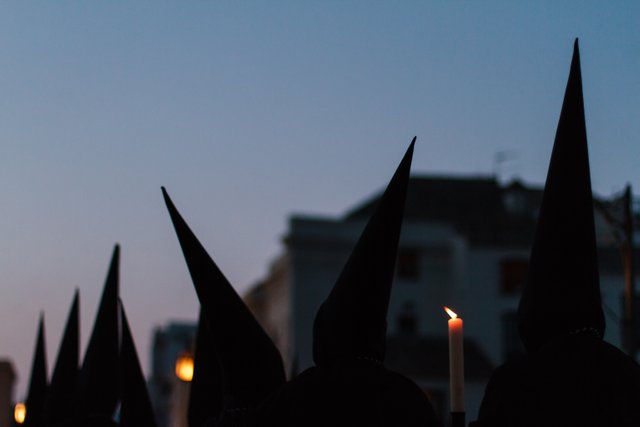
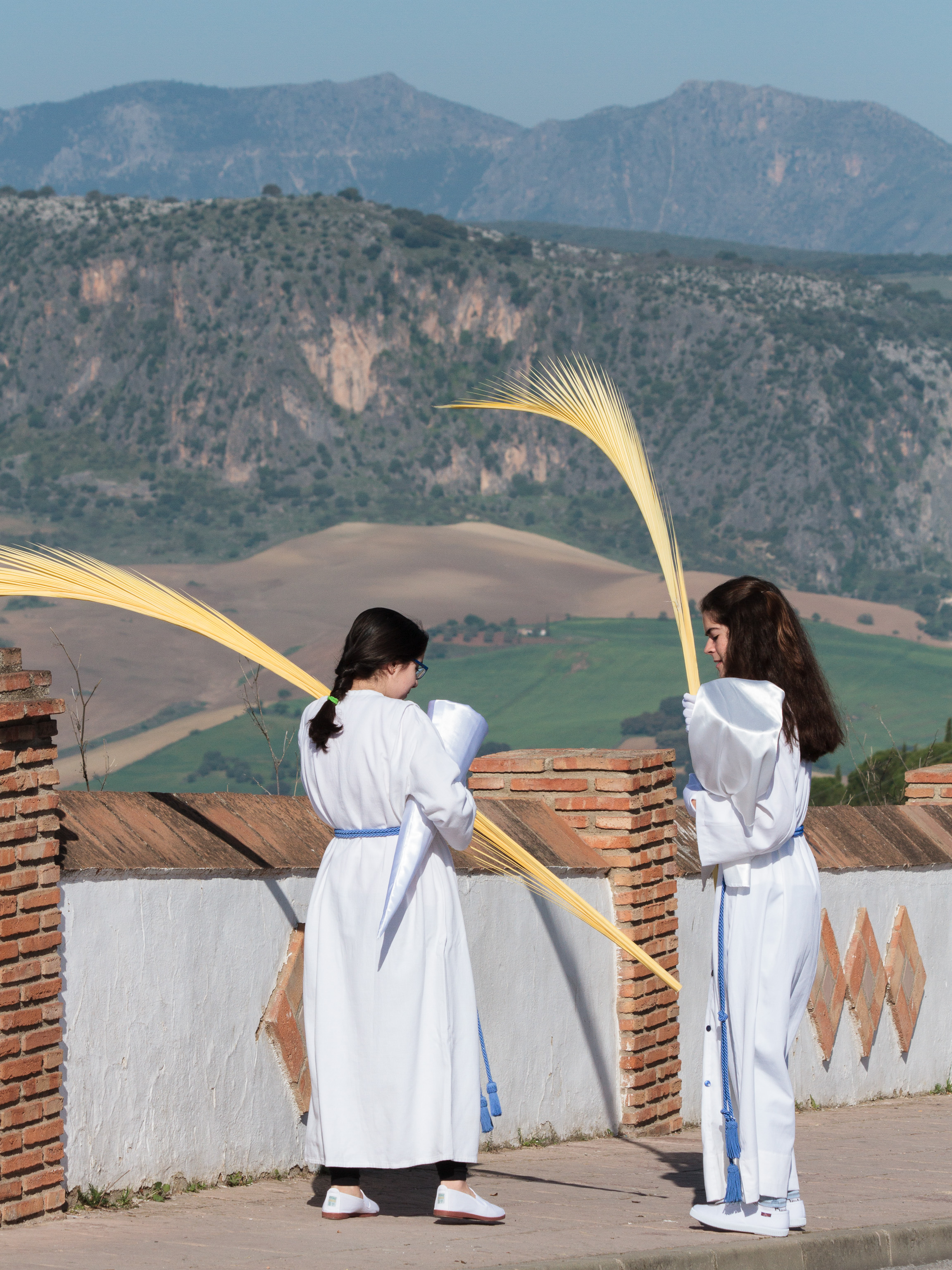
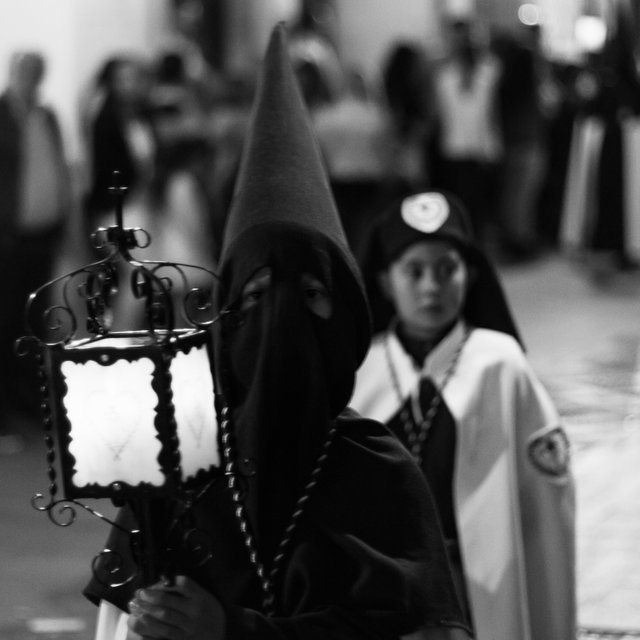
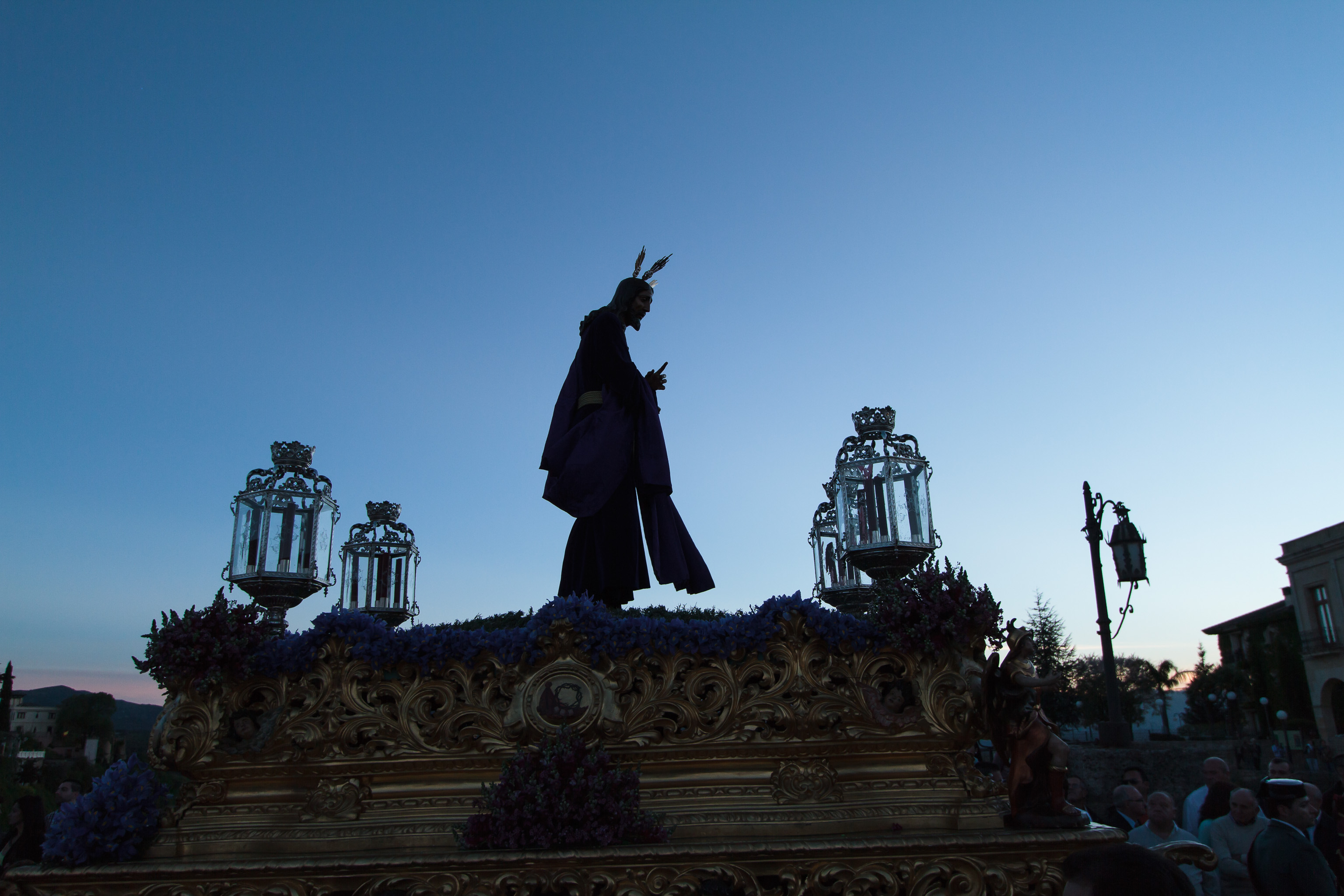
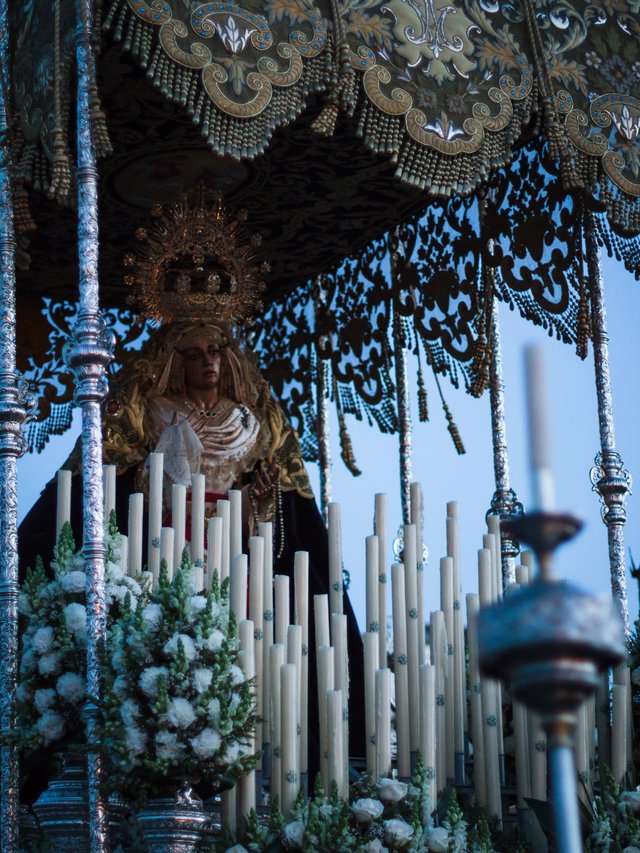
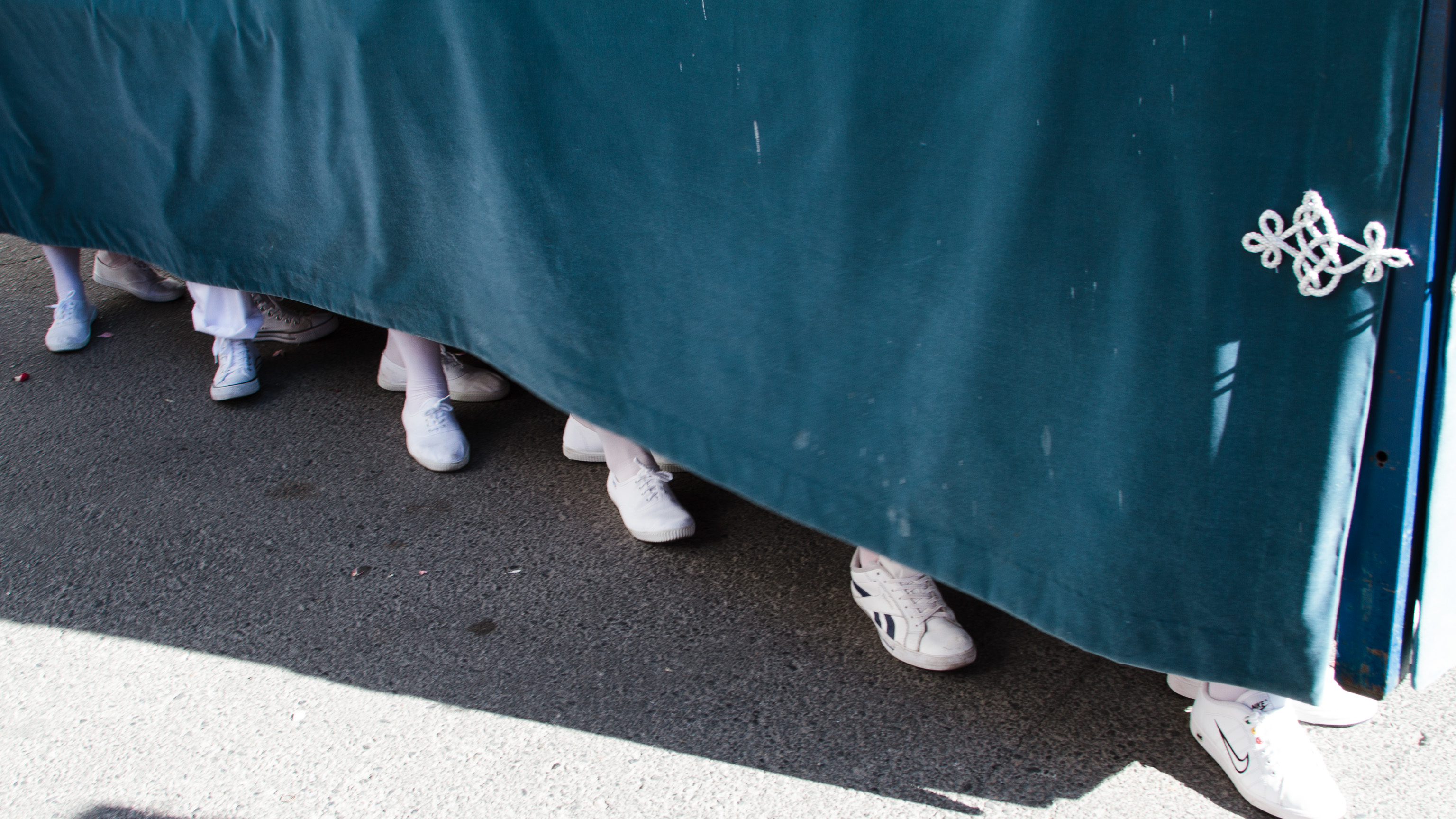
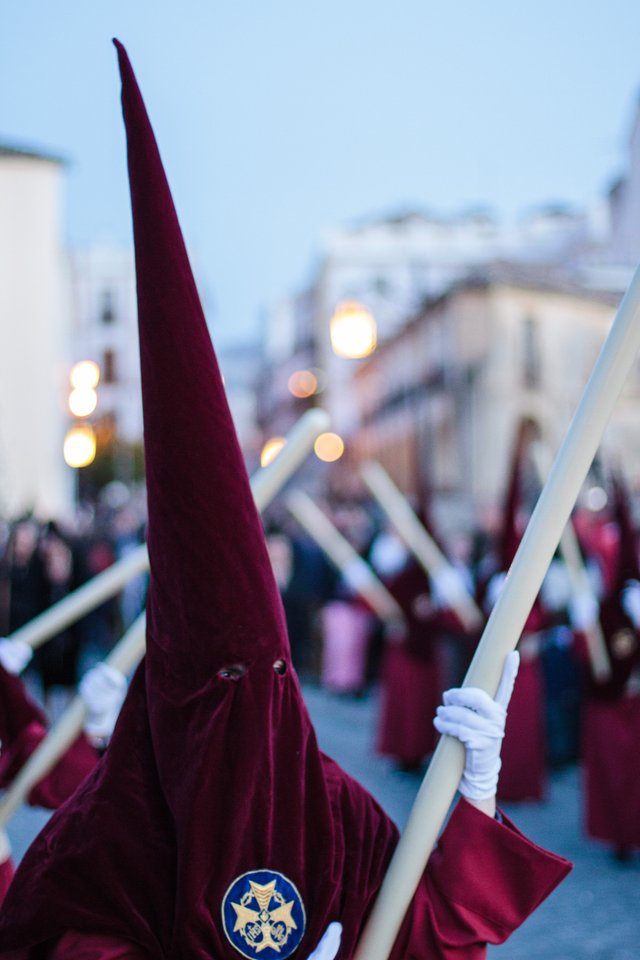
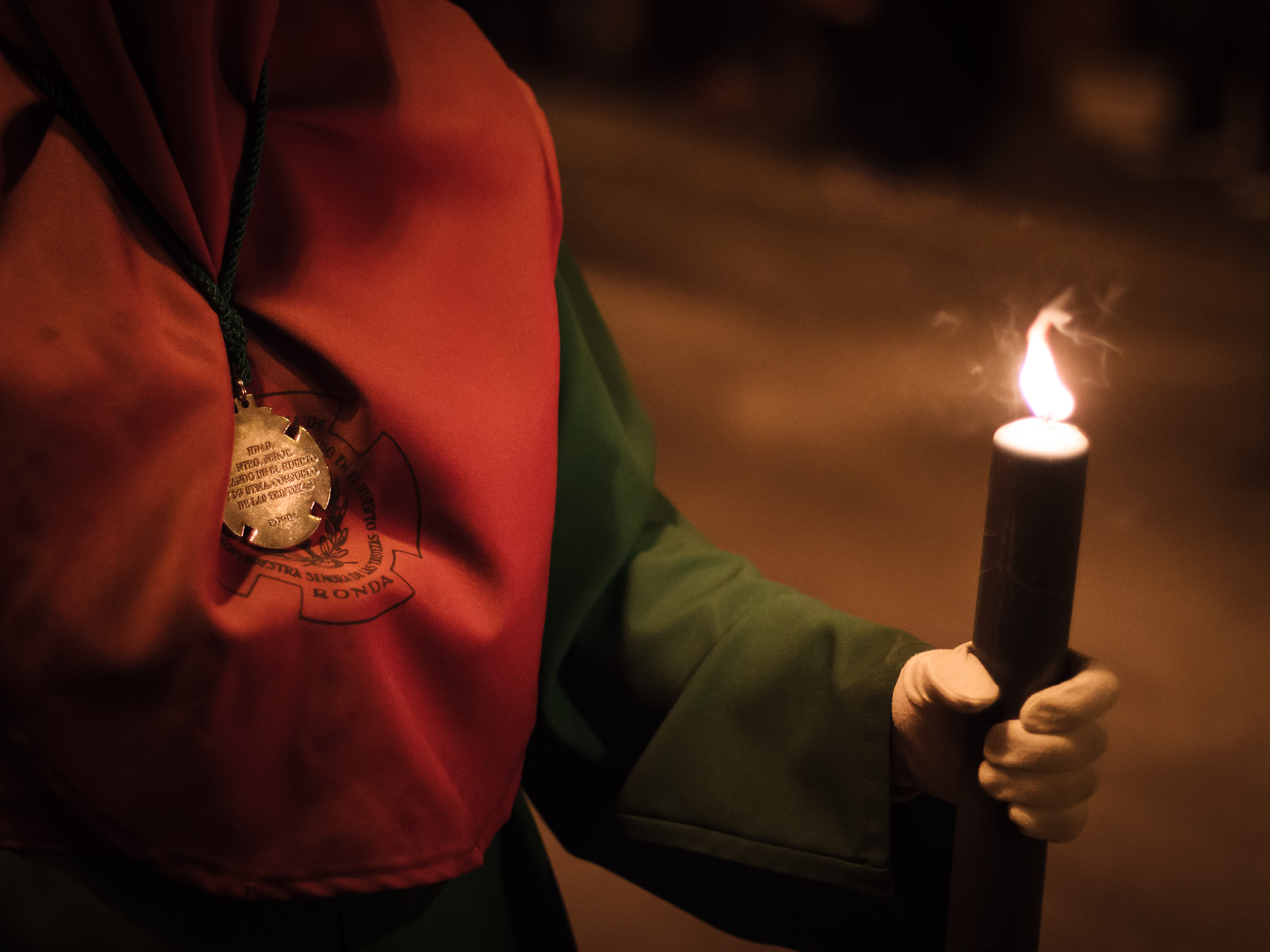
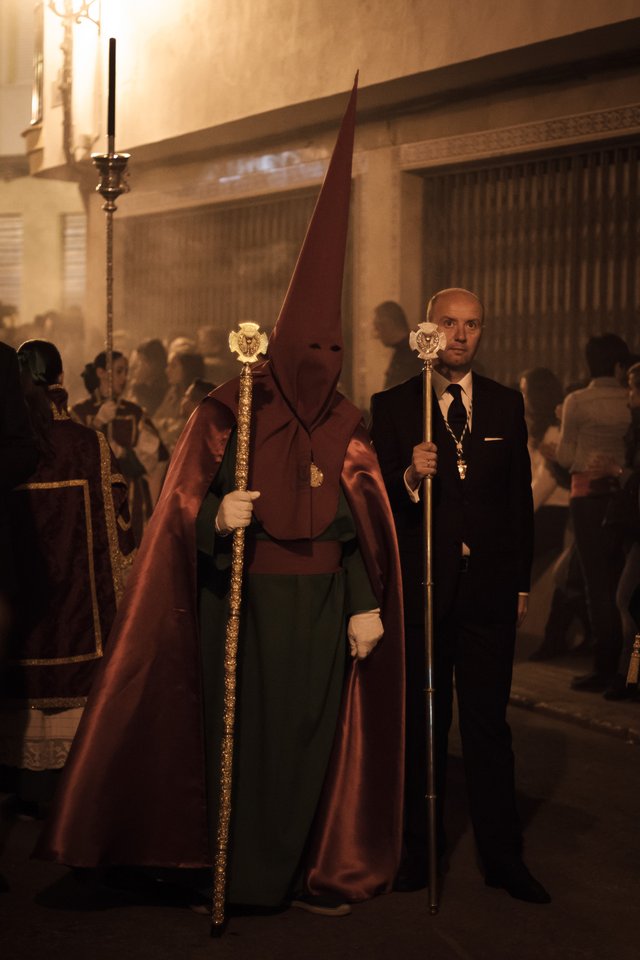
That is really cool, thanks for sharing and good thing you pointed out the meaning of the pointy hats right away. How wonderful that they still power the floats manually with the happy feet (as long as the domino effect doesn't happen :). If the domino effect were to happen, I bet the person that tripped gets to wear the pointy hat the next year, lol. Excellent photos!! My favorite is the candle picture.
Thanks! The photo with the candle is my favorite from the entire week of shooting. I can't imagine being one of the poor people on the inside of one of those pasos on a hot day! There are quite a few videos on YouTube from the 2018 processions in Ronda.
That's so fascinating! Those photographs are all beautiful. I'd heard of Spanish Holy Week but never really knew what it was. The costumes with the pointy hats are interesting. In our culture similar outfits are symbols of the evil KKK whereas it is a religious symbol in another culture. You should just write a photography book with all your wonderful pictures from when you lived in Spain with tidbits of history thrown in.
Thanks! From what I could find out in my research (and remember people saying), the hats go back to the 16th century in processions. I'm not sure how the Klan wound up with similar hats, but it means I have to give a thorough explanation before showing them to my Spanish classes here in the USA.
Interesting tradition! I have hear the hoof beats, I mean drum beats :)
Your photos are very nice @fotosdenada. I liked them all actually and favored the 2nd, 3rd and 5th ones.
Thank you, @countrygirl! It is a great week to be in Ronda. Besides the processions, they have some special pastries that come out during the week. :-)
so, now the truth comes out....it's all about the food or pastries I mean. Now I get it :) What's a celebration without dessert? There isn't one, I say :)
They knew me by name at the pastry shop in Ronda... But I didn't gain any weight, between biking and walking everywhere!
Wow, those are some really interesting outfits they wear. We didn't really see anything here in Panama, but Catholicism isn't as big a deal here really. Thanks for sharing the pics - they are awesome!
Thanks! Surprisingly (or maybe not), there are some pockets of Andalusian tradition in Latin America. There are even some villages in Colombia that have similar Holy Week processions to these.
Makes sense. Someone said there was a parade on the main part of our town, but we live a ways from the main street. Perhaps we just missed it...and the crowds. ;)
I like your photography style. All pictures are very clear and relevant to the topic. I like to ask one question that you mentioned this was holy week but in actual these celebrations go on ? for full 1 week with same style you mention or this is for only 1 day and other 6 days they celebrate in any other ways ? Keep up the good work :)
Thanks! The entire week, starting Palm Sunday and ending Easter Sunday, is like this. Different religious groups have processions on different days, but there are usually two or three processions each day.